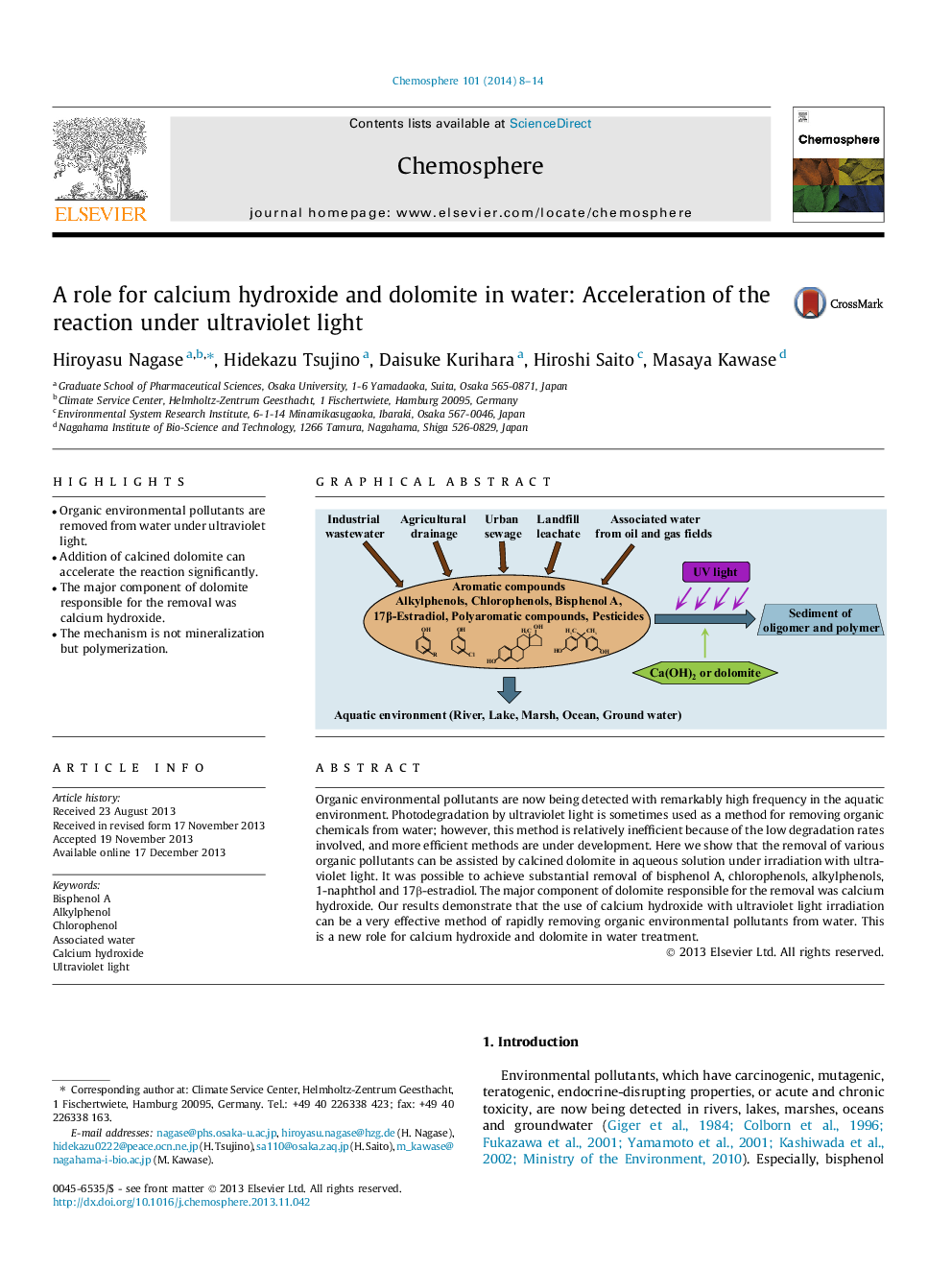| کد مقاله | کد نشریه | سال انتشار | مقاله انگلیسی | نسخه تمام متن |
|---|---|---|---|---|
| 4408900 | 1618870 | 2014 | 7 صفحه PDF | دانلود رایگان |
• Organic environmental pollutants are removed from water under ultraviolet light.
• Addition of calcined dolomite can accelerate the reaction significantly.
• The major component of dolomite responsible for the removal was calcium hydroxide.
• The mechanism is not mineralization but polymerization.
Organic environmental pollutants are now being detected with remarkably high frequency in the aquatic environment. Photodegradation by ultraviolet light is sometimes used as a method for removing organic chemicals from water; however, this method is relatively inefficient because of the low degradation rates involved, and more efficient methods are under development. Here we show that the removal of various organic pollutants can be assisted by calcined dolomite in aqueous solution under irradiation with ultraviolet light. It was possible to achieve substantial removal of bisphenol A, chlorophenols, alkylphenols, 1-naphthol and 17β-estradiol. The major component of dolomite responsible for the removal was calcium hydroxide. Our results demonstrate that the use of calcium hydroxide with ultraviolet light irradiation can be a very effective method of rapidly removing organic environmental pollutants from water. This is a new role for calcium hydroxide and dolomite in water treatment.
Figure optionsDownload as PowerPoint slide
Journal: Chemosphere - Volume 101, April 2014, Pages 8–14
